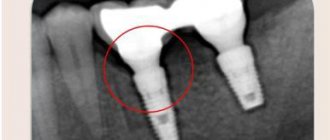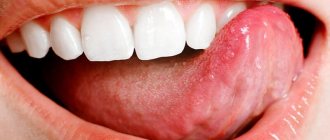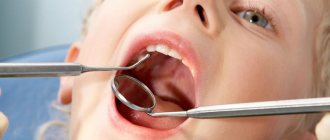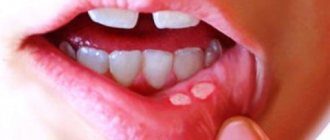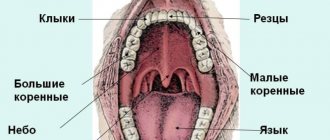- Outpatient department
Outpatient department » - Gastroenterology
Gastroenterology »
- About the direction
About the direction »
- Gastritis: symptoms, diagnosis and treatment
Gastritis is perhaps the most common disease of the gastrointestinal tract. Almost every second resident of our country suffers from it. That is why it is so important to know the first signs and symptoms of this disease in order to start treatment on time and not neglect your health.
Gastritis (from the Latin gastritis, from the ancient Greek γαστήρ (gaster) - “stomach” + -itis inflammatory or inflammatory-dystrophic changes in the mucous membrane) is a collective concept that is used to refer to various inflammatory and dystrophic changes in the gastric mucosa. Damage to the mucous membrane can be primary, considered as an independent disease, caused by poor nutrition, and secondary, caused by other infectious and non-infectious diseases or intoxication.
Types of gastritis
Acute gastritis
In modern medicine, there are several types of acute gastritis:
Simple (catarrhal) gastritis develops as a result of ingestion of stale food contaminated with pathogenic microbes (foodborne toxic infection), rotavirosis, allergies, or as a result of damage to the gastric mucosa by medications. With catarrhal gastritis, the surface layer of the mucous membrane is destroyed, which is quickly restored after the cessation of the irritating factor.
Corrosive (erosive) gastritis. This type of gastritis develops after concentrated acids or alkalis enter the stomach, which corrode the gastric mucosa. In this case, not only the superficial, but also the deep layers of the gastric mucosa are destroyed, so this form of the disease often gives rise to peptic ulcers or the formation of scars.
Phlegmonous gastritis is a purulent inflammation of the stomach that can develop as a result of penetration of a foreign object (for example, a fish bone) into the stomach wall with subsequent infection of this area. A distinctive feature of this type of gastritis is high fever and unbearable pain in the epigastric region. Phlegmonous gastritis requires immediate surgical intervention, as it can develop into peritonitis (extensive inflammation of the abdominal organs) and be fatal.
Fibrinous gastritis. It occurs very rarely against the background of sepsis (blood poisoning).
With proper treatment, acute gastritis (depending on the form) lasts up to 5 - 7 days, but complete recovery of the stomach occurs much later.
Often acute gastritis can become chronic.
Chronic gastritis
Chronic gastritis can develop as a consequence of acute gastritis or as an independent disease. Its danger lies in the fact that it can occur for a long time without showing any symptoms.
In the development of the disease, as a rule, there are periods of exacerbation and remission. During periods of exacerbation of chronic gastritis, short-term attacks of pain, discomfort in the upper abdomen, a feeling of heaviness, nausea after eating, and heartburn may appear, which indicates a dysfunction of the natural “valves” of the stomach and the reflux of acidic stomach contents into the esophagus.
A characteristic feature of chronic gastritis is the gradual growth of connective tissue in the gastric mucosa, replacing the cells that produce gastric juice (atrophy of the gastric mucosa). Chronic gastritis is often accompanied by a decrease in the production of gastric juice and acid (hypoacid gastritis).
Helicobacter pylori infection, which parasitizes the stomach, disrupts the renewal processes of the mucous membrane; thus, when old cells die, new ones cannot be formed. This leads to gradual degradation of the gastric mucosa with loss of function of the glands that produce gastric juice.
Types of oral candidiasis and symptoms
The manifestations of oral candidiasis may vary between patients. This is due to the degree of damage to the mucous membranes, as well as the specific type of disease. There are four forms:
- acute pseudomembranous;
- acute atrophic;
- chronic atrophic;
- chronic hyperplastic.
Despite the fact that the treatment regimen for all forms is almost the same, the symptoms can differ significantly. Let's take a closer look at them.
Acute pseudomembranous candidiasis
This form of candidiasis of the oral mucosa can be asymptomatic. There is minor discomfort due to a white film or small plaques rising above the mucosa. With a mild course, one or several plaques appear; they are easily removed by scraping, and the area of the mucous membrane under them has a bright red color. In severe cases, large plaques appear in large numbers. They can merge, forming large affected areas. Sometimes symptoms cover the entire mucous membrane. When plaques thicken, their removal becomes problematic. A severe course is more typical for infants, as well as in adult patients after antibiotic therapy, corticosteroids, and immunosuppressants.
Acute and chronic atrophic candidiasis
Acute atrophic candidiasis is accompanied by a strong burning sensation. There may be no white plaque, and the mucous membrane becomes bright red. Many patients report a metallic, sour, salty or bitter taste in the mouth. A characteristic manifestation of the disease is dry mouth. This form of the disease is often associated with drug therapy.
With chronic atrophic candidiasis, redness and burning are less pronounced. Usually the disease develops against the background of the installation and wearing of prostheses.
Chronic hyperplastic candidiasis
This form of the disease is typical for adults. Oral thrush can spread to the mucous membranes of the cheeks, corners of the mouth and lips, back of the tongue, and soft palate. One of the symptoms is the appearance of white plaques that tend to merge with each other. As the disease progresses, their surface becomes rough and rough. Over time, the elements may turn yellow. The formations merge with the mucous membranes and cannot be removed.
Causes of gastritis
The main causes of gastritis are:
- poor nutrition;
- hasty eating and poorly chewed food or dry food;
- eating food that is too hot or too cold;
- eating savory foods (mostly spicy and highly salted);
- smoking;
- alcohol consumption;
- stress;
- infection with the microbe Helicobacter pylori;
- chewing gum on an empty stomach.
Xerostomia: causes
As a rule, the causes of xerostomia are “hidden” not in the salivary glands themselves, but in a disease of any system of the body or a general infectious disease. This condition is mainly caused by:
- Infectious diseases: tonsillitis, tuberculosis, HIV, tonsillitis, mumps (aka “mumps”, an infectious disease of the parotid salivary glands).
- Hypertension or severe iron deficiency anemia.
- Rheumatoid arthritis, as well as some diseases of the endocrine system: thyrotoxicosis (occurs when the thyroid gland is damaged), diabetes mellitus (develops when the function of the pancreas is impaired), sialadenitis (inflammation of the salivary glands themselves).
- Head or neck injuries, constant mouth breathing due to injury to the nose or the formation of polyps in the sinuses.
- Long-term use of certain groups of medications, dehydration with prolonged fever or vomiting.
- Bad habits: drinking alcohol, smoking, drug use.
The functions of the salivary glands are not necessarily impaired in all of these diseases and conditions, but if a person has xerostomia, they will be considered as possible causes.
Symptoms of gastritis
So, how can you recognize that you have begun to develop gastritis? It is worth listening to your body and analyzing why pain bothers you, at what time it occurs and how often it happens.
Symptoms of gastritis:
- abdominal pain: sharp paroxysmal or constant painful;
- nausea is constant or intermittent, often occurring immediately after eating;
- heartburn;
- belching with a sour smell;
- repeated vomiting (in the case of acute gastritis, vomiting with blood is possible, since internal bleeding may open in the stomach);
- increased salivation;
- sometimes dry mouth;
- bowel dysfunction: constipation or diarrhea;
- from the whole body: severe general weakness, dizziness, headache, sweating, increased temperature, decreased blood pressure, increased heart rate - tachycardia;
- decreased appetite;
- unpleasant taste in the mouth;
- feeling of heaviness in the stomach after eating;
- bloating, rumbling in the stomach, flatulence;
- anemia, brittle and dry hair, split nails.
Stomach ulcer
The symptoms of the disease and its nature are generally similar to the symptoms of gastritis, but its manifestations are more striking and persistent. Standard gastrointestinal pathologies can develop into a gastric ulcer due to increased stress, frequent and unnecessary medications, alcohol and tobacco abuse, or genetic predisposition.
Dental symptoms - swelling of the tongue, plaque on the oral mucosa, enlargement and increased sensitivity of the papillae of the tongue, increased temperature in the mouth, gingivitis and stomatitis
.
Treatment:
similar to the treatment of chronic gastritis or gastroduodenitis.
Diagnosis of gastritis
Today, the main way to determine gastritis is fibrogastroduodenoendoscopy or FGDS, which consists of studying the condition of the inner surface of the stomach using a probe, as well as a biopsy - removing a small fragment of tissue for examination.
FGDS makes it possible not to confuse gastritis and ulcer and to determine the type of disease: erosive or non-erosive.
Also, a gastroenterologist, to make a correct diagnosis, may prescribe the following tests:
- General blood analysis.
- Fecal occult blood test.
- Histological examination of a biopsy specimen of the gastric mucosa.
- Cytological examination of a biopsy specimen of the gastric mucosa.
- Two tests for the determination of H. pylori.
- Blood chemistry.
- General urine analysis.
Causes of nausea
Nausea can occur for a variety of reasons, ranging from gastroenteritis caused by a viral infection (a common but self-limiting condition in young children) to morning sickness in early pregnancy. Nausea can be caused by medications, overeating, or migraines. In some cases, this symptom may indicate serious and sometimes life-threatening conditions: appendicitis, kidney disease, liver disease, central nervous system disease, heart attack, brain tumor.
Other causes of nausea include:
- motion sickness in transport, including on water (kinetosis);
- benign paroxysmal positional vertigo (BPPV);
- Meniere's disease;
- food poisoning;
- rotavirus and other infections;
- coronavirus infection (COVID-19);
- ear infections;
- meningitis;
- gastroesophageal reflux disease (GERD);
- stomach ulcer;
- Crohn's disease;
- irritable bowel syndrome;
- pancreatitis;
- pancreas cancer;
- decreased activity of the muscular apparatus of the stomach (gastroparesis);
- intussusception in children;
- pyloric stenosis in infants;
- allergy to cow's milk protein;
- intestinal obstruction;
- stress, fears, generalized anxiety disorder, depression;
- anorexia, bulimia;
- vestibular neuronitis;
- alcohol abuse;
- exposure to chemicals;
- cholecystitis;
- cholelithiasis;
- acute liver failure;
- hepatitis;
- diabetic ketoacidosis;
- heart failure, heart attack;
- hyperthyroidism;
- hypoparathyroidism, hyperparathyroidism;
- intracranial hematoma;
- chemotherapy, radiation therapy.
Diet for gastritis
For gastritis with low acidity
Can:
- boiled lean meat: chicken, rabbit;
- meat broths;
- lean fish: pink salmon, hake, cod;
- vegetables in the form of puree or grated: carrots, potatoes, green peas, beets;
- ground fruits, compotes and jelly from apples, raspberries and strawberries;
- porridge (oatmeal, semolina, rice);
- low-fat cottage cheese, milk;
- only squeezed cabbage juice;
- alkaline mineral waters, for example Borjomi (1 glass an hour before meals).
It is forbidden:
- hot and spicy dishes;
- canned food;
- mustard;
- pepper;
- onion;
- hot sauces.
For gastritis with high acidity
Can:
- pureed vegetarian soups;
- dairy products;
- lean fish and boiled meat;
- scrambled eggs;
- porridge, jelly, jelly;
- vegetable purees;
- compotes from fresh (not sour) fruits;
- carrot juice;
- White bread.
It is forbidden:
- coffee and strong tea;
- meat broths;
- smoked meats;
- mustard;
- onion;
- garlic.
For all types of gastritis, split meals are very important - 5-6 times a day.
Gastritis (from the Latin gastritis, from the ancient Greek γαστήρ (gaster) - “stomach” + -itis inflammatory or inflammatory-dystrophic changes in the mucous membrane) is a collective concept used to refer to inflammatory and dystrophic changes in the gastric mucosa of different origins and course. Damage to the mucous membrane can be primary, considered as an independent disease (due to poor nutrition), and secondary, caused by other infectious and non-infectious diseases or intoxication.
Gastritis is perhaps the most common disease of the gastrointestinal tract. Almost every second resident of our country suffers from it.
If you are really looking for your doctor...
Conditions for effective treatment
Effective treatment for oral thrush involves eliminating the underlying cause. It is very important to sanitize the oral cavity: cure teeth destroyed by caries, remove non-viable teeth and roots that can no longer be restored. These are chronic foci of inflammation, so simultaneous sanitation will shorten the treatment time. Tartar and plaque should also be removed. This is especially true for cases of candidal stomatitis associated with injury to the gums by the sharp edges of hard dental deposits.
Patients with removable dentures should be re-trained in hygiene and disinfection of orthopedic structures. If the time to use a prosthesis comes to an end, it is important to replace it in a timely manner. Treatment of candidiasis will be useless if a person uses the denture incorrectly and again creates conditions in the oral cavity for the growth of fungi.
Unsuitable crowns, bridges and other structures must also be replaced. It is also important to eliminate chipped enamel, which becomes a source of injury to the gums, mucous membranes of the cheeks and tongue.
Smokers should reduce their smoking episodes if possible or quit the bad habit. If the disease has developed while taking corticosteroids, it is important to explain the rules of treatment: you should rinse the mouth with plenty of warm water after spraying the drug.
When treating oral candidiasis that has developed during antibacterial therapy, measures should be taken to restore the normal microflora of the intestine and oral cavity. You may need to consult another specialist or therapist: you will need to take probiotics and prebiotics.
For all patients treated for candidiasis, several general recommendations apply:
- maintaining oral hygiene;
- refusal of foods rich in carbohydrates;
- giving up sugary drinks.
It is necessary to exclude from the diet foods that can irritate the mucous membranes: dishes prepared with vinegar, marinades, spicy, peppery foods, smoked foods, sour fruits and berries. You should also not eat confectionery, baked goods made with yeast, or sugar. It is better to give preference to warm dishes. You need to follow this diet for another 1.5-2 months after recovery.
In some cases, it is advisable to use toothpastes with glucose oxidase, lysozyme, and lactoferrin. They help improve the defenses of the oral mucosa and can be part of a comprehensive prevention of inflammation. The choice of toothpaste should be agreed with your doctor; he will recommend the optimal product, and also tell you which brush is suitable.
